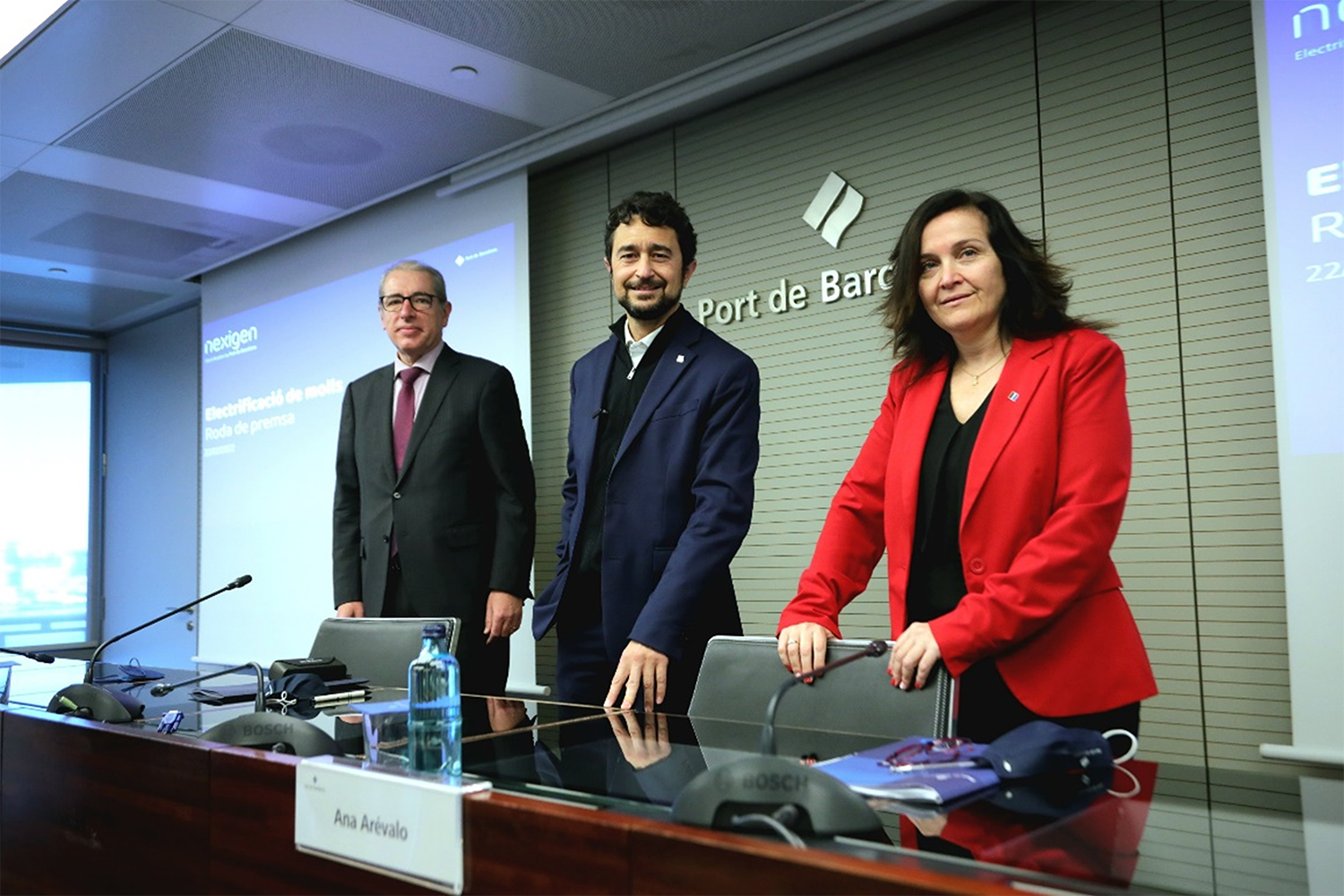
2030 objective
The objective is for the Port of Barcelona to have electrified all the cruise berths, the Prat wharf, and the ferry terminals of the Sant Bertran dock and the Costa wharf by 2030, thereby removing 66,000 tonnes of CO2 and 1,234 tonnes of NOx from port activity emissions. This means "cutting by 38% the tonnes of NOx and CO2 emitted by ships during their stay at the wharf and eliminating 22% of NOx¿and CO2 emissions from all port activity," said Port of Barcelona president Damià Calvet at the presentation of the Nexigen project. In the long term, the electrification of the docks of the Port of Barcelona will be a key element in achieving the goal of becoming a climate-neutral port by 2050.
"The remarkable environmental benefits that will derive from the electrification of the docks of the Port of Barcelona make this one of our strategic projects. And that is why the Plan has been given its own name: Nexigen". This name, explained Damià Calvet, is a combination of next, generation and oxygen and derives its meaning from the fact that it is a Plan "to decarbonise our activity and improve air quality, contributing to the well-being of the next generations. A Plan for the Future".
Timetable
Wharf electrification is a complex process that takes time to achieve. 240 kilometres of cable will be laid, and 20.5 kilometres of ducts will extend to the terminals. The Port of Barcelona plans "to make the first electrical connections of ships to the BEST container terminal and the Barcelona Ferry Terminal between the end of 2023 and the beginning of 2024", according to Port of Barcelona Energy Transition Manager Ana Arévalo.
Two years ago, the Management Board of the Port of Barcelona approved the creation of the Wharf Electrification Plan. In March 2021, Red Eléctrica confirmed construction of the new Ronda Litoral Substation, a key infrastructure in the project. This new 220 kV substation will be located very close to the Princep d'Espanya wharf on the south side of the Ronda Litoral ring road. Furthermore, the tender for the pilot project at the BEST terminal began in January this year.
The next steps will involve processing the application for access and connection of a position for a large consumer in Red Eléctrica's Ronda Litoral Substation, once the planning of the electricity transmission network for the period 2021-2026 has been published and putting the pilot project on the Ferry Terminal out to tender during the month of April. The connection to the Ronda Litoral Substation will make it possible to roll out a smart flexible medium-voltage network that will distribute electricity from renewable sources to the various wharves. Then the OPS will be installed on each wharf with the necessary connection management system for each type of ship.
The Nexigen project is guaranteed to effectively reduce port emissions and provides assurances to the Port of Barcelona managers that this is a "climate action to contribute to a better planet, with greater well-being for people and more respect for the natural environment", states Damià Calvet. "We have perfectly calculated the emissions of the ships during their stay in port, therefore with the Wharf Electrification Plan we will take direct action to eliminate these emissions", affirms Ana Arévalo.
The high investment and complexity involved in a project like Nexigen require cooperation between ports and other actors on the international level. And so it is that the Port of Barcelona is involved in two key projects in the field of decarbonising port activity. On the one hand, the EALING project, which brings together ports from nine EU countries, provides funding for studies and analysis of Onshore Power Supply (OPS) electrical connection infrastructures right up to the tender process. The project aims to achieve technical and legal harmonisation at European level to allow standardisation of electrical supply processes to ships. On the other hand, the PIONEERS project, comprising 46 partners, aims to develop concrete solutions to reduce greenhouse gas emissions in ports while maintaining their competitive edge. This project has received a €25 million grant from the European Horizon 2020 programme.
"With Nexigen we are preparing for the future, and this will allow the Port of Barcelona to be in the first division of the decarbonisation of port, maritime and logistics activity", underlined Damià Calvet this morning to end the presentation of the Nexigen project.



